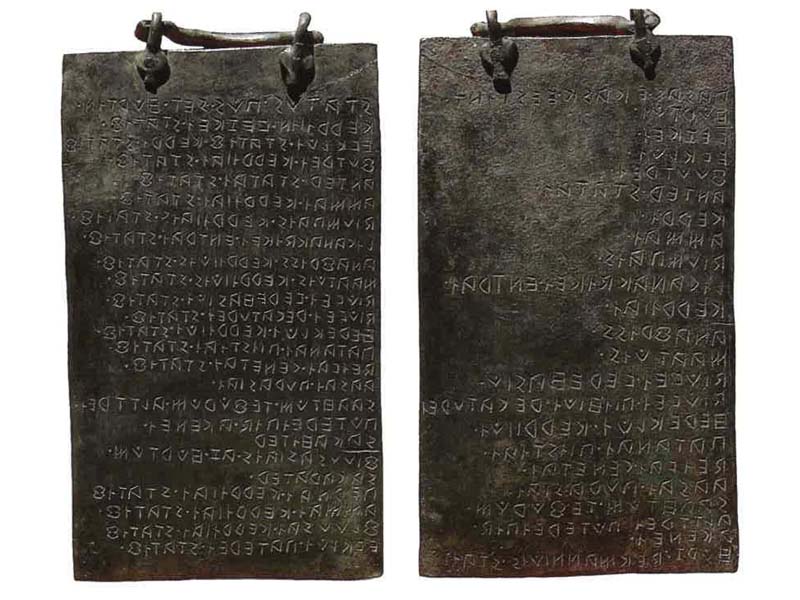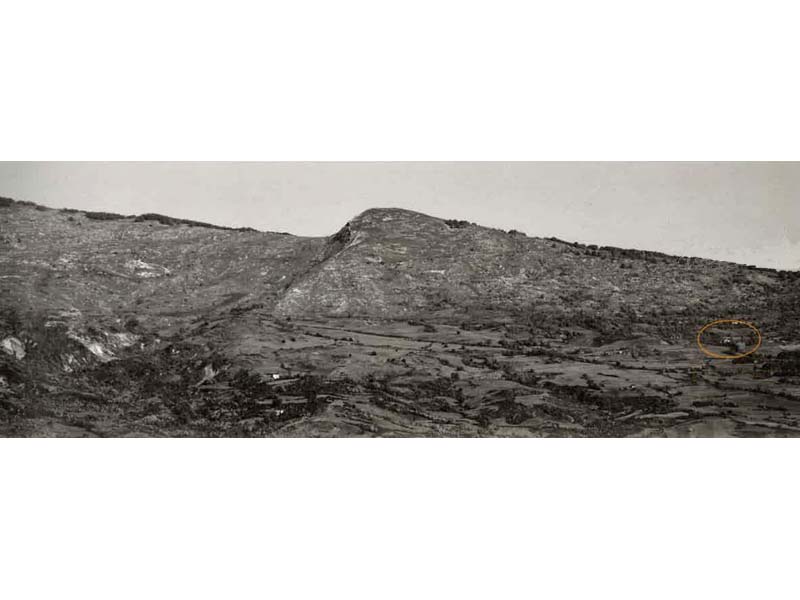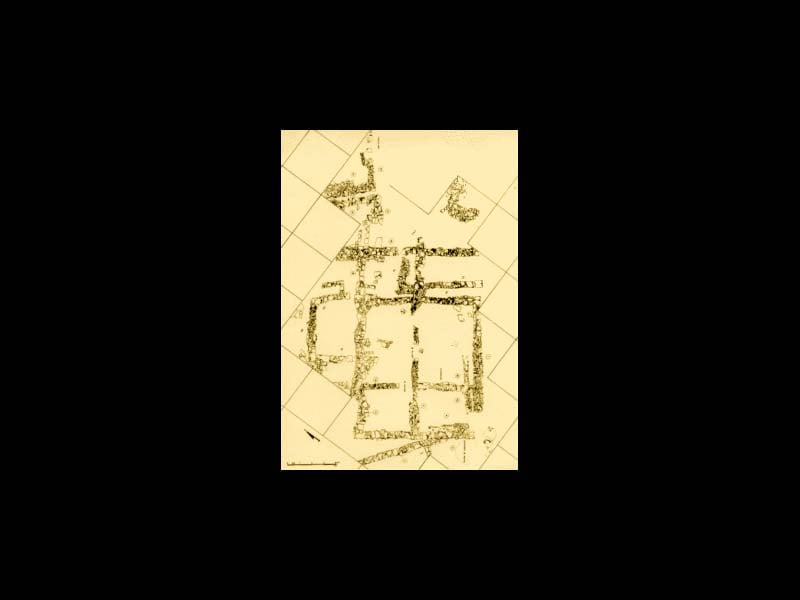Inscription in the Oscan language on both sides of a cm. bronze tablet. 28×16,5 equipped with a chain attached to two holes for hanging. At the time of discovery, the tablet was still attached to a stone, probably part of the wall of the sanctuary from which it hung. The engravings are deep and easy to read. Reading is done from right to left. The first facade contains 25 lines and deals with sacred ceremonies to be dedicated to the fifteen listed divinities of which Ceres is the main divinity, to be held during the course of the year. It is also stated that every two years a ceremony must be held on the fire altar, inside the enclosure, and that every year, at the time of the "Floralia", sacrifices must be made to four deities, at the Sanctuary. The second side contains 23 lines. They concern the belonging to the sacred precinct of the altars dedicated to the divinities venerated in the sanctuary. They establish that the "saahtùm tefùrùm must be on the unsuspecting air” and that the Shrine belongs to those who pay the tithe; the list of what belongs to the sanctuary follows, the people who can attend it and who manage it are defined.
The deities listed in the Table are:Kerres – Ceres, the deity to whom the sacred area was dedicated;
Vezkei – Ancient
Evklui Paterei – Mercury or Hades, brother of Jupiter;
Futrei Kerriiai – Persephone daughter of Demeter;
Anter Stai – Stata Mater dei Marsi;
Amai Kerriiai – Demeter;
Diumpais Kerriiais – The water lilies of the springs;
Liganakdikei I entered – Divinity linked to vegetation and fruits;
Anafriis Kerriiuis – The water lilies of the rains;
Maatuis Kerriiuis – Italic goddess dispenser of dew for the crops;
Diuvei Verehasiui – Jupiter Virgator;
Diuvei Regaturei – Jupiter Pluvius;
Hereklui Kerriiui – Hercules;
Patanai Piistiai – Goddess of winemaking
Deivai Genetai – Mana Geneta;
Pernai Kerriiai – Goddess of shepherds
I flowed – Flora protector of the shoots.
The most prominent element is the importance attributed to Kerres. The sacred area was named after her and all the gods venerated in that place were the same as those of the Samnite Olympus but in relation to the function they were asked to perform: led by Ceres, they had to support her in propitiating the earth and protecting its fruits. Therefore Kerres is the fulcrum of the religious rituals that took place in the Sacred Garden, understood as a symbol of all the cultivated lands, and it is no coincidence that the Table was found on the hill which today is called Monte del Cerro and was made of bronze, a metal that figured prominently in rituals honoring Ceres.



Historical Notes
The Table was found in 1848 by the farmer Pietro Tisone while he was working on the farm owned by Giangregorio Falconi. In May 1848, Francesco Saverio Cremonese examined it and made a cast; in October he officially announces it. In the summer of 1848, Gian Gregorio Falconi had also lent or sold the panel to the goldsmith Vincenzo Paolo D'Onofrio. In 1867 the panel was in the possession of the antiquarian Alessandro Castellani of Rome, who in 1873 sold it to the British Museum in London. There is a second Table, legitimately owned by the D'Onofrio Amicarelli family, equal to the one kept in the British Museum. The two plates differ only for two small details in two letters which however do not compromise the understanding and translation of the text.
Francesco Di Rienzo reports: “From the ambition to rediscover the sanctuary of Ceres to the discovery of a real human settlement with an uninterrupted vitality of about a thousand years. From the expectation of shedding light on the effective role of the Osca Table to the prospect, however, of studying the progressive evolution of a Samnite inhabited center from the protohistoric age to the beginning of the imperial age of Rome. The extraordinary discovery was made by the Archaeological Superintendence of Molise which, from 1979 to 1985, promoted five excavation campaigns near the Fonte del Romito, in the Macchia district in Capracotta, with the stated aim of bringing to light the sacred enclosure dedicated to the goddess of the harvest. And instead, under the shovels and picks of the archaeologists, the remains of an ancient town have materialized little by little and shed new light on the history of our districts in the most remote eras. The oldest finds date back to the XNUMXth century. BC, the period in which the historical populations of Sannio were formed. They are rather scarce (a fund of huts) and do not allow any hypothesis to be advanced about the size of the settlement and the socio-economic structure of its population…”.
CARD
LATEST PUBLISHED TEXTS
VISIT THE FACTSHEETS BY OBJECT

